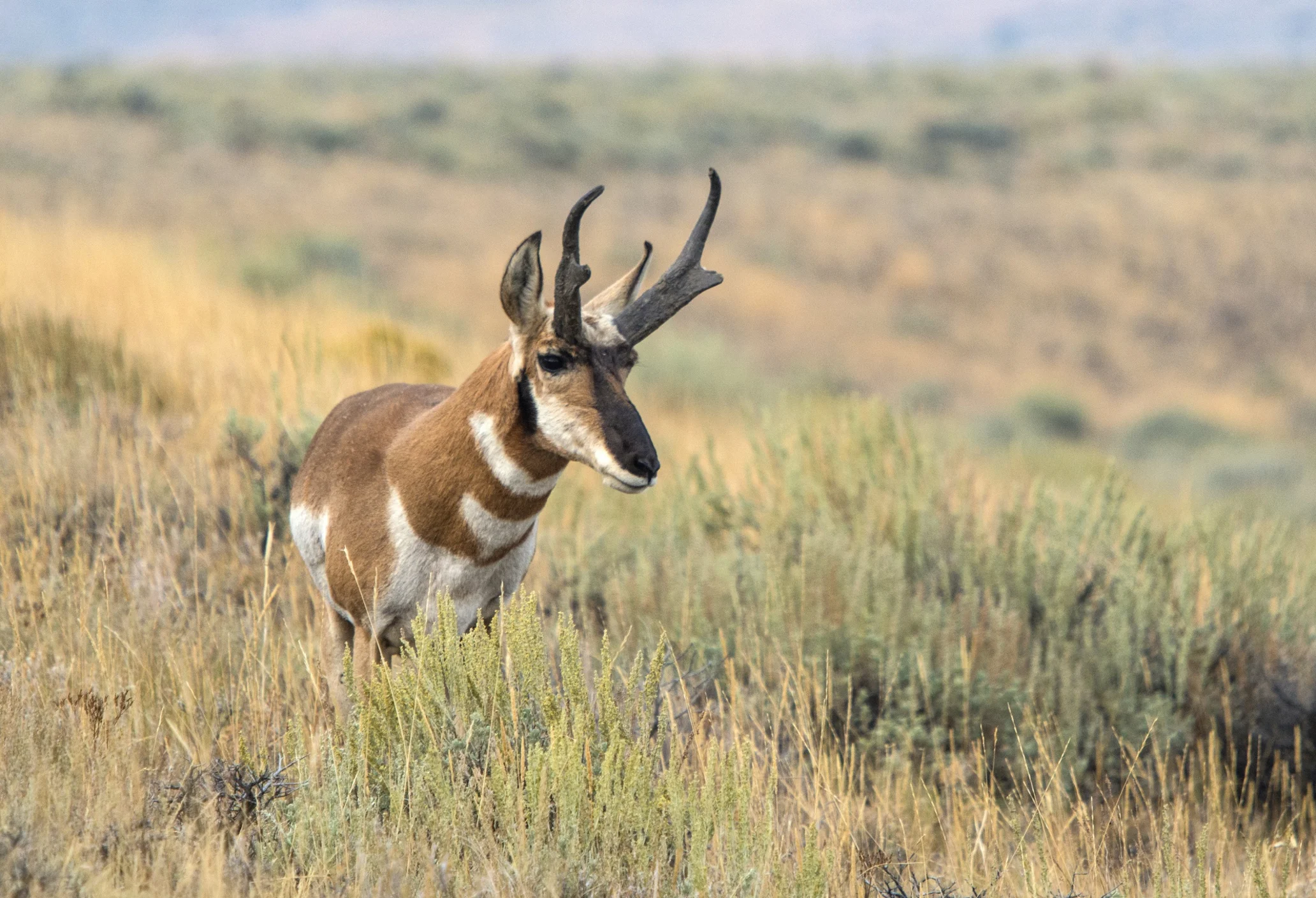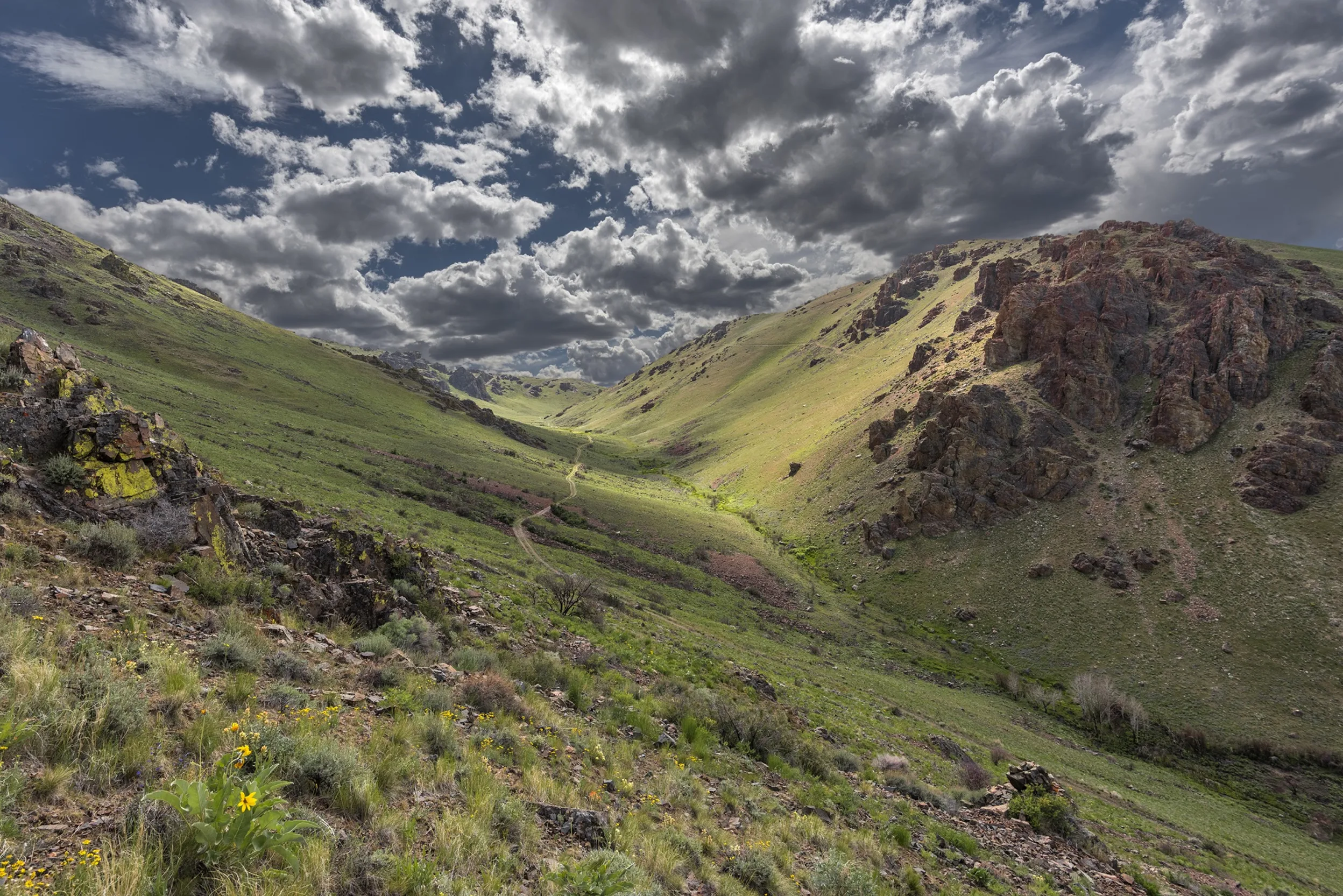Protecting the Sagebrush Sea
“[We see] unparalleled potential to build a connected, climate-resilient landscape linking more than one million acres of wildlife habitat." — Oregon Desert Land Trust

Nestled in the Great Basin, the southeastern corner of Oregon is a vast mosaic of aspen woodlands, grasslands, creeks, wet meadows and sagebrush-steppe. It is home to rare plants and wet meadows that fuel life throughout the year, supporting a diverse array of birds and wildlife like California bighorn sheep, pygmy rabbit and pronghorn antelope, as well as vulnerable species like greater sage-grouse and Lahontan cutthroat trout.
So, when Oregon Desert Land Trust (ODLT) had the opportunity to secure nearly 17,000 acres nestled among and between the Pueblo and Trout Creek mountains last year, they saw unparalleled potential to build a connected, climate-resilient landscape linking more than one million acres of wildlife habitat. The project area encompasses nearly 800 square miles and helps connect several established conservation areas, including two national wildlife refuges and a wilderness area. Many of the project area’s mountain streams and springs drain to Oregon's driest spot — the Alvord Basin — providing critical water to a desert landscape.

Restoring sensitive habitats and facilitating innovative public land management are critical to maintaining the important resiliency and connectivity across this open space. Thanks to strong partnerships with the landowner, The Nature Conservancy (TNC) and other supporters, this land in the Pueblo and Trout Creek mountains can be protected forever.
“Oregon Desert Land Trust embodied a collaborative attitude during the discovery, negotiation and closing process, and we are personally confident that we made the right choice in terms of passing stewardship of the property,” said Duane Grant, of Grant 4D Farms, who sold the property.
Trout Creek Ranch is one of the largest conservation projects in Oregon and fundraising efforts continue for acquisition costs and future stewardship activities across such varied landscapes. ODLT and TNC are creating collaborative land management strategies that will help establish regional conservation goals. The two partners are contemplating multiple stewardship projects, including restoring 2,500 acres of vital wet meadow habitat for birds along the Pacific Flyway, prioritizing soil health in agricultural fields and managing livestock grazing to achieve both economic and ecological goals.
“This is a big win for conservation efforts in Oregon’s high desert, but it’s just the beginning. The project provides a foundation for working with others to create thoughtful approaches and solutions to a number of the challenges facing lands across the region,” said Brent Fenty of Oregon Desert Land Trust.
ODLT will continue building partnerships with tribal communities, land managers, ranchers and other groups and individuals to connect these wild and working lands that benefit both wildlife and people. These lands have outsized importance in an arid landscape and managing them to sustain healthy habitats, abundant wildlife and the resource-dependent economies of local communities is critical to the future of Oregon’s high desert.
*This project has been granted funding from the Land Trust Alliance through the Pacific Northwest Resilient Landscapes Initiative (RLI).
Oregon Desert Land Trust works to preserve the wild character of Oregon’s high desert. oregondesertlandtrust.org